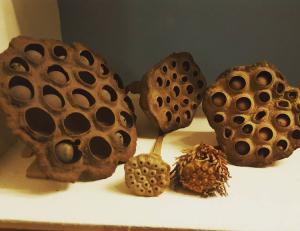15% of the world’s population suffers from fear of holes, and science has finally come up with a surprisingly simple answer.
We humans have countless fears, and there are very strange fears, such as the fear of holes – Trypophobia that at least 15% of the world’s population (equivalent to nearly 1 billion people) is suffering from. Right.
This syndrome can be understood literally – that is, the fear of punctured surfaces. People who suffer from this syndrome when they see “holes” images such as cheese, lotus mirrors, or even the legendary honeycomb sandals… often feel uncomfortable, scared, nauseous. , dizzy…

The image of a very ordinary lotus can also scare many people to death.
But why humans are afraid of such surfaces has puzzled science for a long time. There have been many theories put forward, the most prominent of which is that the brain is overloaded. In particular, many experts believe that to handle surfaces with too many holes, the brain needs more oxygen, leading to reactions with sensations such as dizziness, nausea to force the viewer to stop looking.
However, this solution is met with many objections, because only 15% of the population has it. Moreover, the “visual illusion” pictures also require us to need more oxygen to the brain, but do not cause the same effect.
But in the end, experts from the University of Kent (UK) have found the solution, and it is surprisingly simple. That’s because evolution has kept a part of us afraid of: disease and parasites.
Over time, in particular, evolution has taught some of us to avoid contagious and somewhat… grisly diseases – typically smallpox, measles, rubella, typhus, or infected with ticks … At that time, the body will react with nausea, dizziness, forced to avoid.
This syndrome is similar to the fact that some people feel afraid of blood, fear of odors … so.

In particular, over time, evolution has taught some of us to avoid diseases.
To come to a conclusion, the research team conducted a survey on 600 people – half have fear of holes. All were observed 16 perforated pictures, of which 8 were about human skin diseases, the rest were photos of ordinary objects (lotus, cheese…)
As a result, images of illness made both groups feel scared, while photos of ordinary objects only scared the group of “vibration” holes.
They felt their skin itch, their bodies tingled, and this proved that the claustrophobia mimics what it feels like to see a parasite or disease.
Evolution is weird sometimes, isn’t it?

